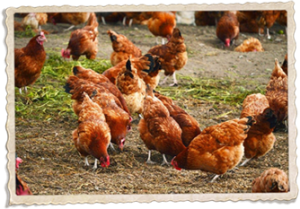If you walk into your local grocery store, you’ll notice that most eggs have white-colored shells. However, did you know that there are multiple variations of egg colors? In fact, colored eggs are commonly found in backyard coops. Before you start your collection, there is some vital information to understand:
The Science Behind the Color
If your chicken has been laying white eggs, it’s not suddenly going to start laying brown eggs next week. Egg color is determined primarily by genetics. This means that not all breeds of chickens will lay the same color eggs. It takes 24-26 hours for a hen to lay an egg. All eggshells start white inside of the hen because shells are primarily made from calcium. If an egg is going to be a different color, color pigments will be deposited on the egg as it continues to travel through the hen’s oviduct.
Egg Colors
There are a wide variety of eggshell colors including blue, olive, brown, with the occasional pink, chocolate, and other colored tones. Although the outside of the shell is a different color, it won’t necessarily match the color on the inside.
- White eggs are white all the way through
- Brown eggs are white on the inside
- Blue eggs are blue all the way through
- Green eggs are blue on the inside
Many people believe that the color of the egg increases its nutritional value. This, however, is false; the color of the egg does not impact the nutritional value of the egg. Yet, eggs sourced from backyard hens are known to be more nutritious than industry produced eggs because hens spend more time in their natural environment.
Which Chickens Produce Colored Eggs
To obtain specific colors of eggs, you need to find the hens that produce them. Below are some of the options you can choose from that can produce the color egg you desire.
- Brown Egg Layers: Australorp, Welsummer, and Marans.
- Blue Egg Layers: Ameraucana and Cream Legbar.
- Green Egg Layers: Olive Eggers.
Quick Tip: Often, you can tell what color egg a hen is going to produce based on the color of its earlobe. Most hens with white earlobes will lay eggs with white shells. Hens with red earlobes tend to lay eggs with brown shells. It can be challenging to predict egg color using this tactic, but there is a correlation between eggshell color and earlobe color.
Different colored chicken eggs are a unique feature that will add flare to your backyard flock. At Chickens for Backyards, we have plenty of chicken species that will add diverse colors to your coop. If you’d like to learn more about the process of adding colored eggs to your coop, contact us at your convenience.

